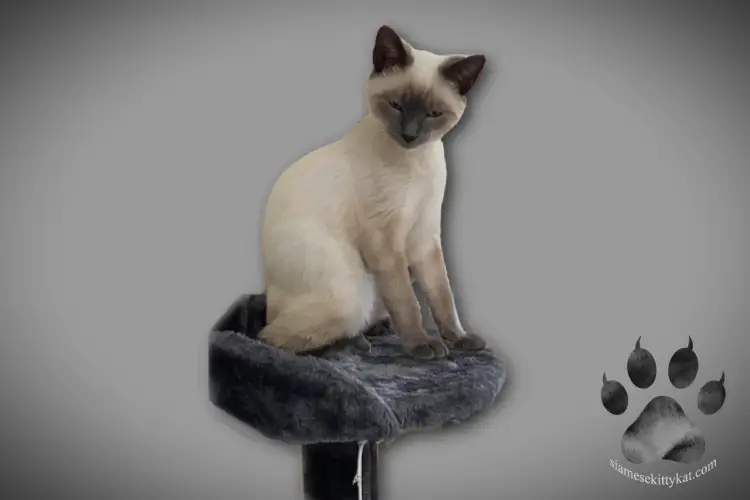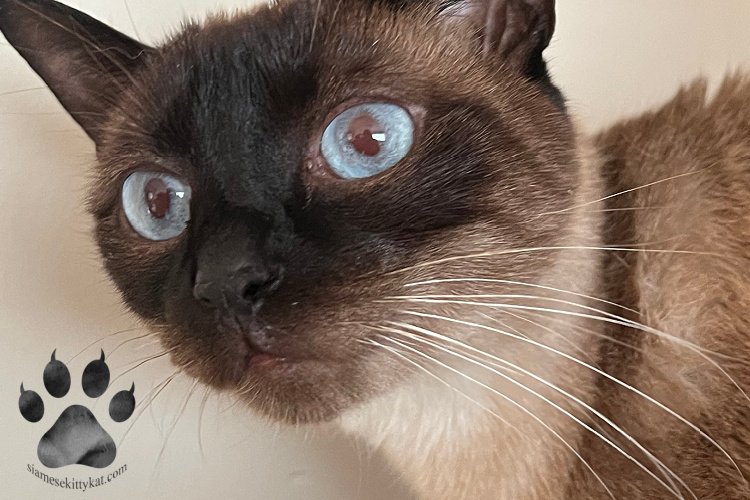Whiskers are adorable additions to the Siamese cat’s anatomy. They are not only cute but also serve various vital functions! Why do Siamese cats have whiskers in the first place?
Siamese cats use their whiskers to feel what is happening around them and to know how to go about their routines. Their whiskers serve as radars, built-in rulers, and vision assistants. They are a powerful and necessary part of how they sense and perceive the world.
I have always been curious about what my cats’ whiskers are for, so I looked more into this cute cat feature and discovered a lot about it! Let me share what I’ve learned about cat whiskers with you.
Siamese cats have dozens of moveable whiskers on their faces and all over their bodies. Cats use their whiskers to feel things and get information the same way insects use their antennae.
Whiskers’ most well-known functions are to aid sensation and navigation, but what about their other functions?
Keep reading to find out!
What Is The Purpose Of My Siamese Cat’s Whiskers?
1. Whiskers are your cat’s radar.
Siamese cats have a built-in radar system called vibrissae, or whiskers, as we call them. The placement of their whiskers is even and balanced. They have 24 whiskers, each side having 12. The arrangement of the whiskers helps them get a good reading of what is happening around them.
Your cat’s whiskers can help him feel vibrations in the air, which he uses to find prey and measure distances. His whiskers can pick up changes in how the air moves and tell him when something dangerous is coming.
2. They help you know how your cat is feeling.
Want to know what your cat is feeling? Check out their whiskers!
Whiskers can give you an insight into how your Siamese cat feels. The movement or position of your kitty’s whiskers reflects his mood.
Your Siamese cat has four rows of whiskers on each side of his muzzle. The two rows on top can move in both directions. You can tell how your cat feels by observing the movement and position of his whiskers.
Some examples are as follows:
| Your Siamese cat’s emotion | His whiskers are …. |
| Calm | in normal position |
| Curious | elevated above his eyes |
| Aggressive | out to the side |
| Alert | bent backwards |
| Threatened | rigid and directed toward the threat |
| Relaxed | in normal position |
| Fearful | pressed downward to his face |
| Friendly | faced forward |
| Defensive | pulled back |
| Dreaming about catching a mouse | twitching during his nap |
3. Whiskers aid your cat’s sense of self-movement and orientation.
Siamese cats have hair follicles in their whiskers. These hair follicles are full of nerves and proprioceptors, which provide proprioception.
Proprioception is like a Siamese cat’s sixth sense. Your cat has a sense of self-movement and body position because of proprioception.
Your furry kitty relies on proprioceptors due to his constant need to climb, jump, and land on his feet.
4. Whiskers help your cat’s tail function as a body balancer.

Siamese cats almost always land on their feet when they jump. This is because of their tails and proprioceptors.
Felines use their tails to keep their balance. The whiskers help their tails perform their function.
Proprioceptors are sensory receptors that respond to position and movement. Your Siamese cat’s brain receives body mobility information from proprioceptors. Whiskers help your kitty remember which body parts are moving and which should move next.
5. They function as vision assistants.
Siamese cats have difficulty seeing and focusing on objects up close. They can see better at a distance.
Whiskers aid in their close-up vision. They send information to their brains about the objects nearby.
Whiskers help your Siamese cat see close objects that lie right under his nose. They help your cat locate his food bowl, water bowl, and toys.
6. They help your cat hunt better.
Whiskers act as an extra set of eyes for Siamese cats. They assist cats in detecting what is around them and finding prey far from them. They also serve as excellent night vision aids.
Your cat’s whiskers help him see in the dark, giving him an advantage when hunting. Your kitty can move around without bumping into things or hurting himself at night.
7. Whiskers trigger a protective blink reflex to protect your cat’s eyes.
Whiskers help cats check their environment up close. The whiskers prompt cats to back up to avoid eye damage when they walk outside and encounter grass.
Your cat’s whiskers trigger protective blink reflexes to protect his eyes from damage. They help your pet avoid bugs and other objects that could bother or irritate his eyes while hunting.
8. Whiskers help your cat judge the distance and size of a space.
Siamese cats do not get stuck in furniture or small or tight spaces because of their whiskers. Whiskers have tiny, sensitive nerves that help cats judge distance and space.
Your cat’s whiskers serve as an in-built ruler. They help him measure the bottom of a piece of furniture, a little fence, or a small area. His whiskers will tell him if he can go through the space or passage without getting stuck.
9. They keep your cat out of trouble.
Whiskers help Siamese cats determine if an object or area can hurt or scratch them.
The whiskers around your cat’s eyes respond to the slightest touch. It’s easier for your Siamese cat to blink or shake off anything that could hurt because of his whiskers.
Whiskers are always there to save your cat’s day!
Why Does My Siamese Cat Have Whiskers On Its Legs?
You can spot whiskers on your cat’s face and legs. The whiskers on the backs of their forelegs help your nearsighted cat capture small prey.
The whiskers on your cat’s legs, also called carpal whiskers, help him hunt and track the movement of prey.
What Are Some Interesting Facts About Cat Whiskers?

- Whiskers are the first hairs to develop when your cat is still in the womb.
- The scientific name for cat whiskers is “vibrissae,” which means “to feel vibrations in the air.”
- Whiskers are also called tactile hairs.
- Your cat’s whiskers are longer and thicker than their normal hairs.
- You’ll see the majestic symmetry of your cat’s whiskers when he yawns.
- Your cat’s whiskers go from white to dark gray or black as he ages.
- Blind cats rely on their whiskers to find their way around.
What Is Whisker Fatigue?
Whisker fatigue is not a disease. It is also not related to any feline illness.
Whisker fatigue is like an information overload that stresses out your cat. The receptors in the whiskers can detect the minutest movements.
Your cat may have whisker fatigue due to repeated contact with food and water bowls. Your cat needs new food and water bowls if that is the case. A wide bowl allows your Siamese cat to eat without his whiskers touching the bowl’s sides.
Will My Siamese Cat’s Whiskers Grow Back If Cut?
Your cat’s whiskers will grow back after shedding or cutting. It takes about three months before the whiskers regrow.
It would be best if you do not trim or cut your cat’s whiskers unless instructed by your vet due to a health concern.
Final Thoughts
There is a good reason why your cat’s whiskers are super sensitive yet so important. They have many nerves and proprioceptors that serve critical functions for your cat. Do not snip your cat’s whiskers or play with them while petting him. Also, feed your cat in a large bowl. The sensation of leaning into a bowl could be uncomfortable for his tactile hairs. Many thanks for reading!
Want to immerse yourself more in the captivating world of Siamese cats? I’ve got all the information you need from their distinct color points to their fun personalities: Siamese Cats: Unique Features and Personality

